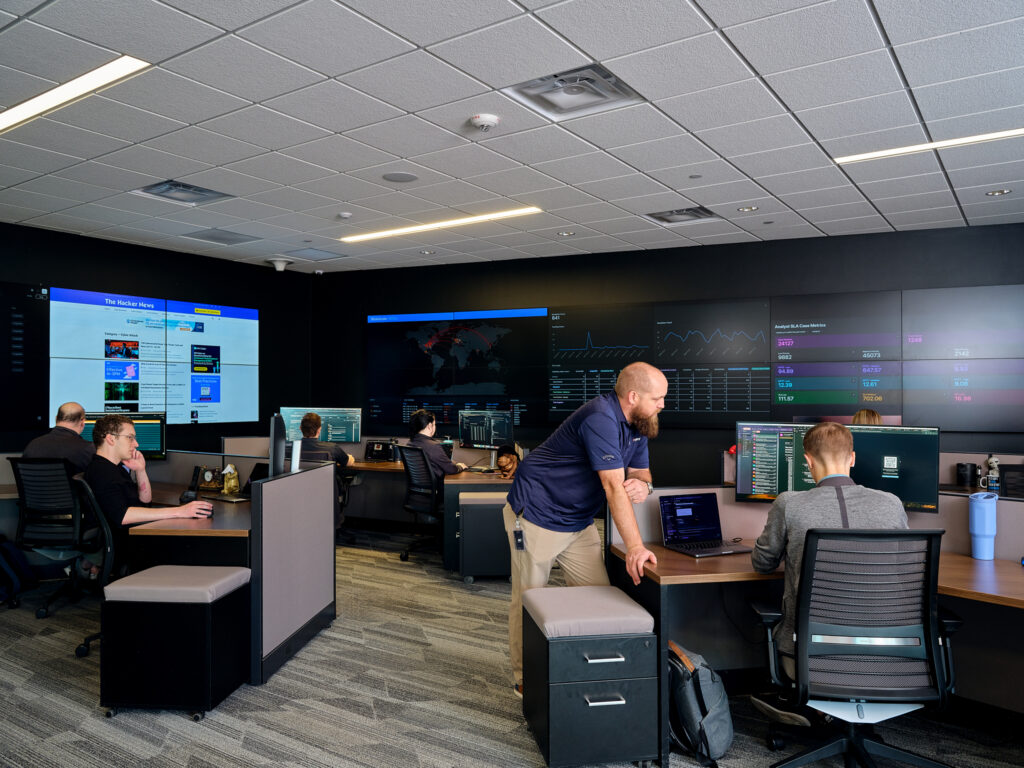In my role as SOC Manager at Novawatch, a Managed Detection and Response (MDR) provider, I manage a complex environment where operational efficiency, analyst performance, and client satisfaction are critical to success.
Running a SOC in an MDR context comes with unique challenges — from handling overwhelming volumes of alerts to keeping skilled analysts engaged and clearly showing clients the value of our work. Based on my experience leading our SOC toward operational excellence, I’ll outline key challenges we’ve faced and the technical and procedural solutions that helped us overcome them.
Challenge #1: Managing High Alert Volumes
In the early stages of our SOC operations, we were faced with a massive number of security alerts from our extensive set of event management systems. Analysts were constantly bombarded — from seemingly normal user behaviors like legitimate logins from unusual locations to low-priority anomalies such as unidentified IoT devices on the network.
This high alert volume led to:
- Analyst fatigue
- Increased risk of missing critical incidents
- Strained metrics like Mean Time to Detect (MTTD) and Mean Time to Respond (MTTR)
The main challenge was separating real threats from noise—without compromising security visibility.
Solution: Automation and SIEM Optimization
To address the issue, we deployed a robust Security Orchestration, Automation, and Response (SOAR) platform to help automate triage and resolution of known, permitted activities.
By developing predefined rules informed by historical alert analysis, the SOAR system eliminated routine events and surfaced only high-priority incidents to human analysts.
At the same time, we optimized our SIEM configurations—refining correlation rules and thresholds to focus on abnormal behavior rather than expected patterns. We also trained our analysts to build confidence in the automation, ensuring they could focus where their expertise was truly needed.
Results:
- ~40% decrease in alert volume
- 25% improvement in MTTD
- Improved analyst efficiency and strategic resource allocation
Challenge #2: Analyst Retention and Workload Management
The SOC environment is intense—long shifts, high-stakes decision-making, and constant pressure to identify threats in real time. This pace puts analysts at risk for burnout and can drive high turnover, undermining team stability and increasing recruitment costs.
Solution: Workload Balancing and Professional Development
To counteract burnout and promote long-term analyst retention, we took a multi-faceted approach:
- We restructured shift schedules based on alert volume trends to ensure balanced workloads and proper staffing during peak times.
- We introduced cross-training programs, allowing analysts to contribute to detection engineering and playbook development alongside traditional triage.
- A formal recognition program was launched to highlight meaningful contributions during weekly team briefings and boost morale.
These changes significantly reduced turnover, strengthened team engagement, and fostered a more resilient and knowledgeable workforce.
Challenge #3: Demonstrating the Value of MDR to Clients
One of the more nuanced challenges of operating a SOC within an MDR offering is proving our value—especially when no major security incidents occur.
When things are quiet (thanks to effective prevention), some clients wonder: “Why do I need this service?”
Solution: Enhanced Reporting and Contextual Communication
We reimagined our client reporting framework with clarity and transparency in mind:
- We moved away from dense, data-heavy reports toward concise visual summaries using charts, KPIs, and heatmaps.
- Reports now highlight key metrics like threats mitigated, response times, and proactive recommendations.
- We incorporated brief incident narratives to help clients understand what actions were taken and why—even if a breach was prevented.
These updates helped clients recognize the day-to-day value of our SOC, improving satisfaction, trust, and long-term relationships.
Conclusion: Building a Resilient SOC in an MDR Framework
Successfully managing a SOC in an MDR environment requires more than just technology. It demands:
- A strategic mix of automation and alert tuning
- A deep commitment to analyst well-being and professional growth
- Clear and effective client communication to demonstrate ongoing value
By focusing on these areas, we’ve built a resilient and efficient SOC capable of adapting to the evolving threat landscape.
I’d love to hear from other cybersecurity professionals—What challenges are you seeing in your SOC? What’s working for you? Let’s share ideas and move the industry forward, together.







